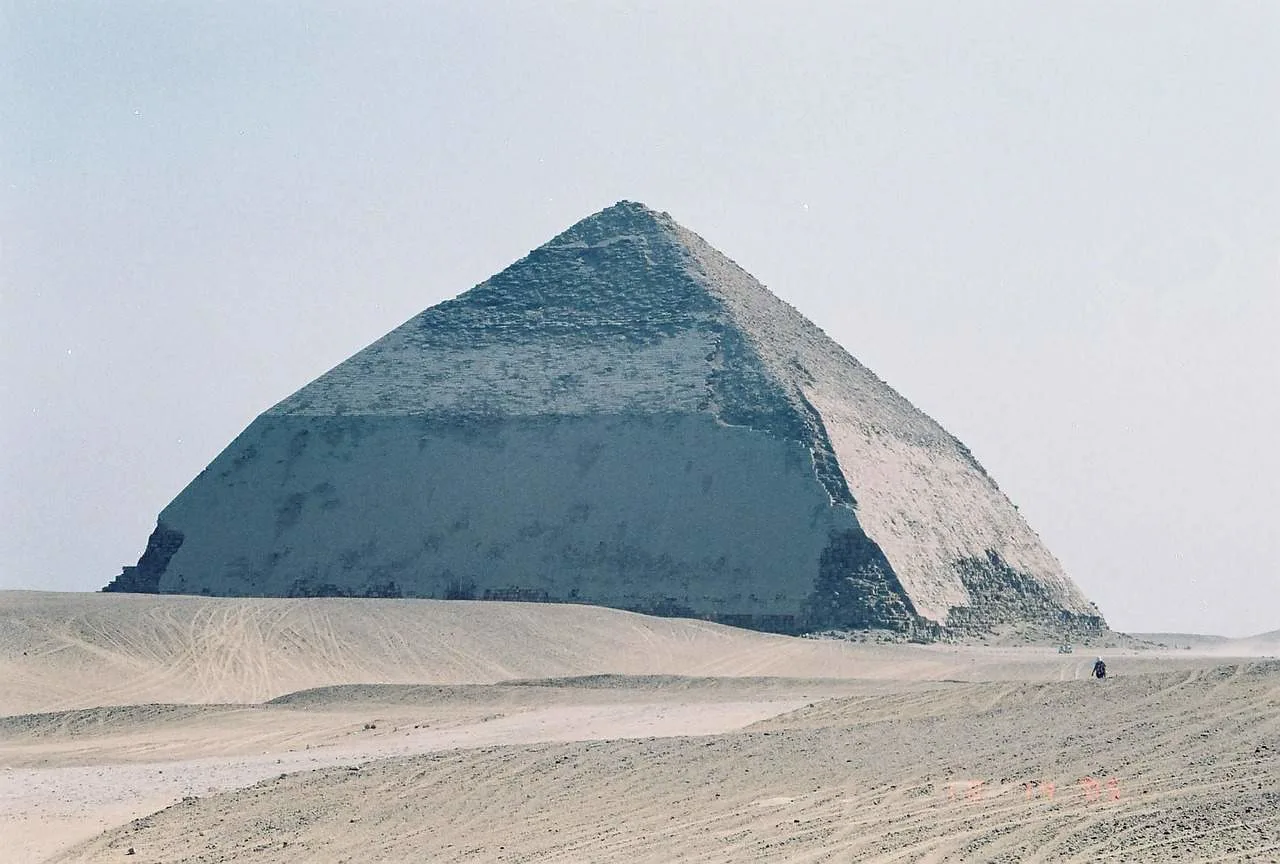One of the most fascinating buildings in Egypt is the centerpiece of an archaeological site in Lower Egypt and was once the tallest building in the world.
In this article, we take a closer look at some of the most interesting facts about the Meidum Pyramid, one of the oldest pyramids in Egypt with a remarkable history.
1. The pyramid is located just south of modern-day Cairo
While some other famous pyramids in Egypt, most notable those located on the Giza Plateau, are situated on the outskirts of the immense city of Cairo. These include the Great Pyramid of Giza, the only of the 7 wonders of the ancient world that still stands, and the relatively smaller Pyramids of Khafre and Menkaure.
The Meidum Pyramid, on the other hand, is located right in the middle of nowhere at a distance of about 100 kilometers (62 miles) south of Egypt’s capital. This makes it a pretty impressive sight to behold.
It’s part of a much larger archaeological site that features a mortuary temple and several mudbrick mastabas, basically flat ancient Egyptian tombs and the predecessors of the mighty pyramids.
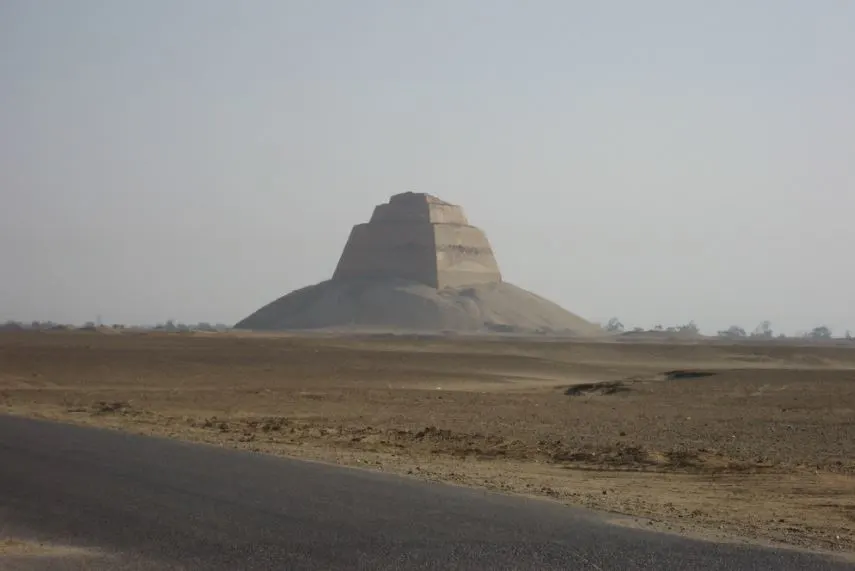
2. It’s assumed to be only the second pyramid that was ever built
This particular pyramid is a pretty fascinating structure because, after the countless mastabas that were already constructed all across ancient Egypt, the scope of the construction projects gradually grew.
This all started with one of the first pyramids that were ever built, the Stepped Pyramid of Djoser, built during the 3rd Dynasty by the Pharaoh with the same name between 2670 and 2650 B.C.
The Pyramid at Meidum is believed to have been started by Pharaoh Huni, the final leader of the 3rd Dynasty, and continued by the first Pharaoh of the 4th Dynasty, Sneferu (2613-2589 B.C.).
Yes, this means that this structure is well over 4,500 years old!

3. It was the first bold attempt to build a straight-sided pyramid
Another interesting fact about the Meidum Pyramid is that it is considered to be the first-ever attempt to build a straight-sided pyramid. This was a serious advancement compared to the Pyramid of Djoser which has a stepped design.
Unfortunately, this also shows in the result because it partially collapsed and only the inner core of the pyramid still stands today.
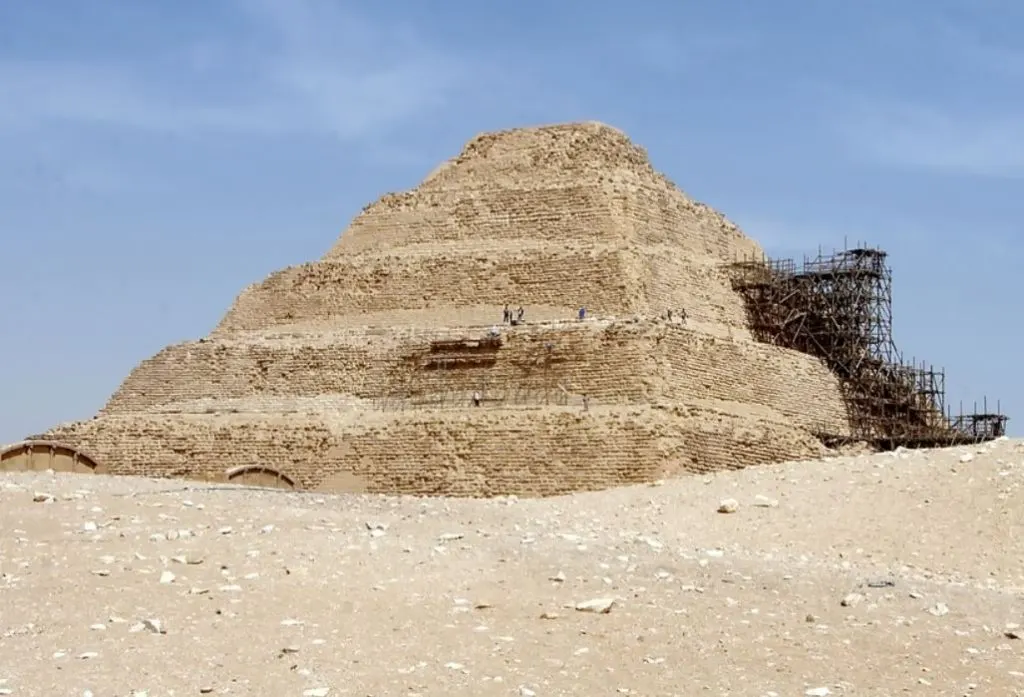
4. It almost reached the height of a skyscraper in ancient times
Today, the ruined pyramid has a total height of 65 meters (213 feet), something that still makes it a prominent landmark in the flat eastern edges of the Sahara Desert.
The original structure was much higher though as it almost reached the height of a modern-day skyscraper!
It has been calculated that before the collapse of the pyramid, it actually stood 91.65 meters (301 feet) tall, which effectively made it the tallest building in the world at the time.
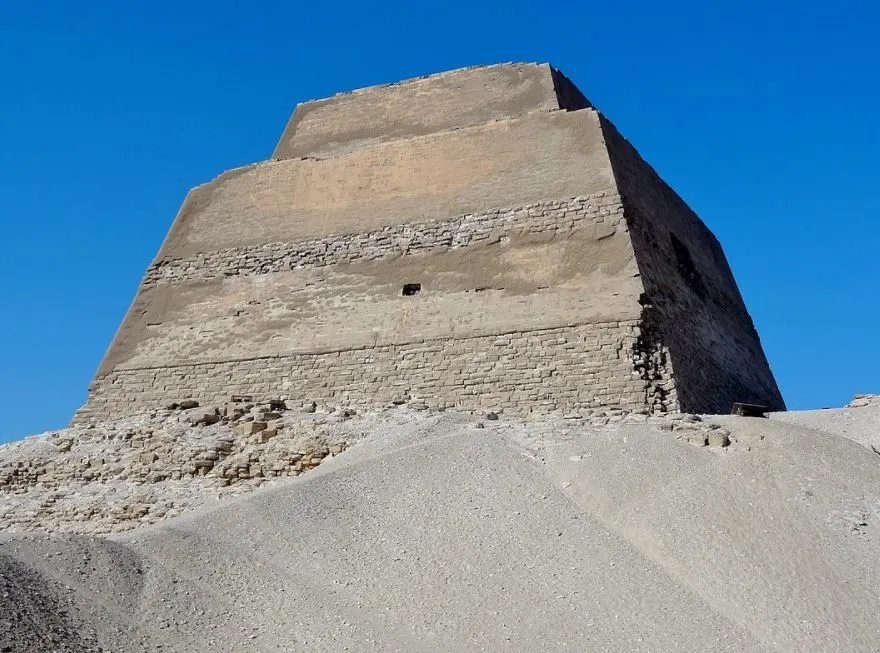
5. The pyramid’s base is much bigger than it initially appears to be
Because of the peculiar shape left behind by the dramatic event that resulted in the pyramid’s collapse, it doesn’t appear to be that big at its base. It’s only when you come a bit closer to it that you really see at what a massive scale this structure was originally erected.
As with just about any other pyramid, the base is a perfect square that has a length of 144 meters (472 feet), which means that it has a length of almost one and a half football pitches!
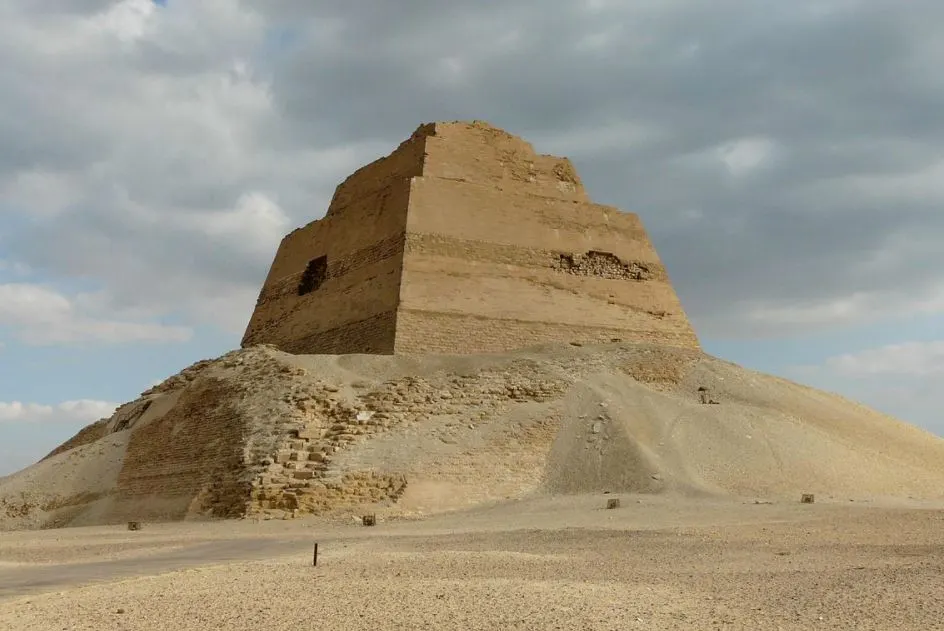
6. The pyramid faced 2 major issues which resulted in its partial collapse
So why did the Meidum Pyramid collapse anyways?
There wasn’t any predecessor building of this type so we have to give the ancient engineers some credit, but they still made a lot of crucial mistakes that resulted in the outer layer of the pyramid tumbling over. Some of these included:
- The outer layer was built on sand and didn’t have a solid foundation. This one speaks for itself and is actually a remarkable mistake since the inner section did have a brick foundation.
- The outer layer was only added after the core step pyramid structure was completed. This means that the outer layer wasn’t part of the structural design and actually destabilized the entire building.
This pretty much means that they initially copied the design of Djoser’s pyramid and only turned it into a straight-sided pyramid afterward using limestone. The heavy burden of this limestone encasing resulted in the entire outer layer giving way at some point.

7. It’s pretty certain it collapsed during construction for many reasons
While there are historians who believe that the collapse of the pyramid happened at a later date, the available evidence all point to the direction of a collapse during the final construction phase. Some of the reasons we can be confident this happened are:
- The pyramid was left uncompleted.
- The pyramid didn’t have a valley temple, a common feature at any mortuary complex until the 12th Dynasty.
- The mortuary temple was never completed as well and doesn’t have inscriptions dedicated to the Pharaoh.
- The same applies to the various uncompleted mastabas surrounding the complex.
Even though this is very much speculation, what likely happened is that the outer layer gave way during a heavy rainstorm, something that put additional pressure on the already unstable structure.
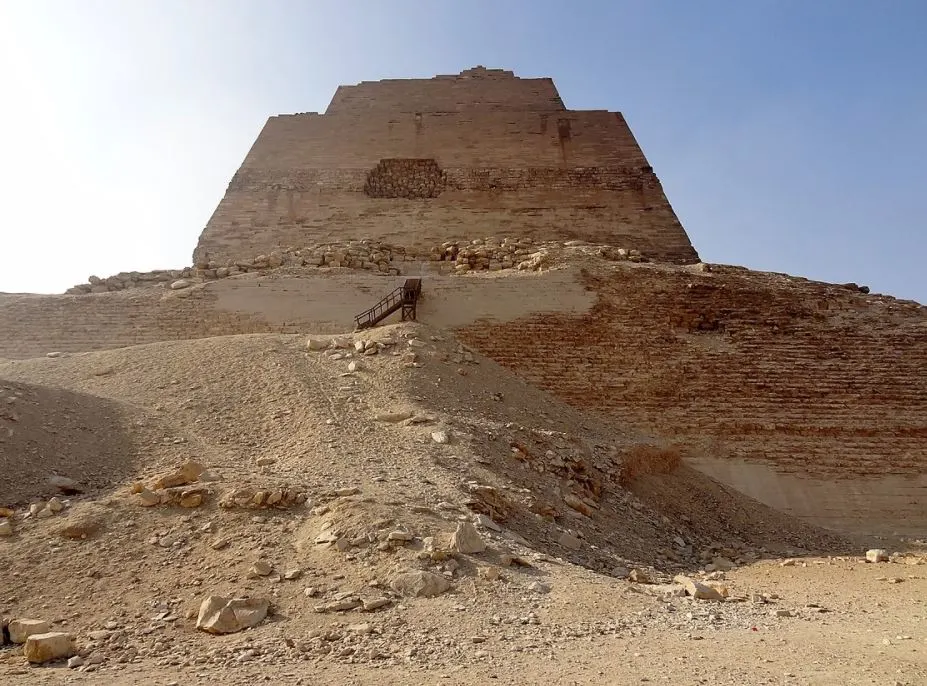
8. Did the Pyramid at Meidum collapse further in modern times?
The pyramid at Meidum looked exactly as it does today during the Egyptian expedition led by Napoleon in 1799. There are rumors, however, that it further collapsed some centuries earlier.
That’s because renowned 15th-century Egyptian Arab historian Al-Maqrizi (1364-1442) described it as a “five-stepped mountain.”
Whether this is a reference to the fact that the pyramid still had 5 steps instead of just 3 as it appears today is uncertain. It could simply be that he meant a “five-storied mountain,” a reference to the pyramid’s height.
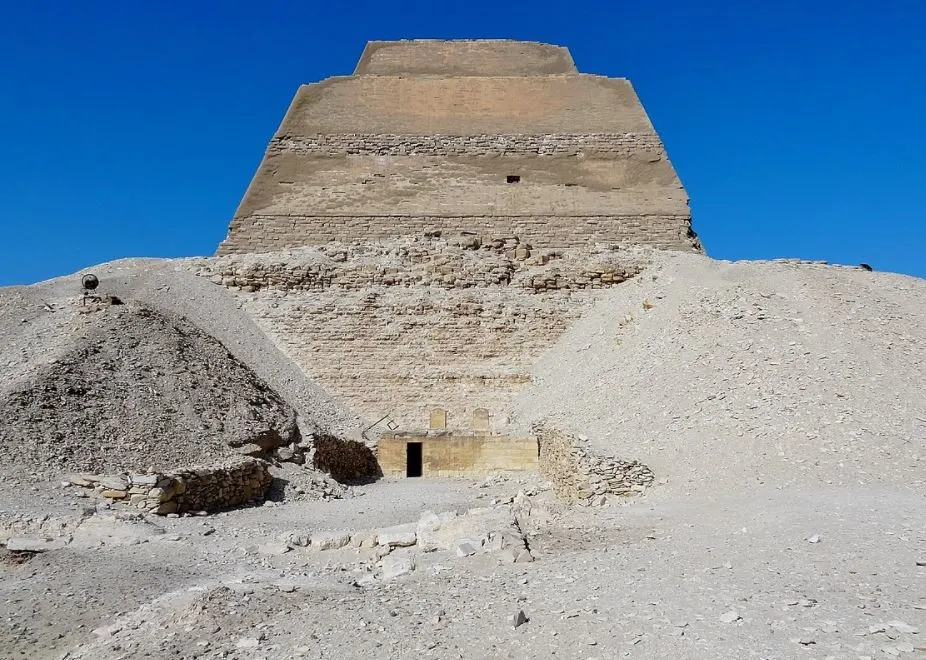
9. It’s possible that nobody was ever buried in the burial chamber
The pyramid features an entrance on its northern side at a height of about 20 meters (66 feet). This leads to a steep downward passage with a length of about 17 meters (57 feet) which leads to a small space just below ground level.
This small passage in turn leads to a vertical shaft with a height of 3 meters (10 feet) that leads directly into the burial chamber.
One of the most intriguing facts about the Meidum Pyramid is that this burial space appears to never have been used. This further indicates that the project was suddenly abandoned while still uncompleted.
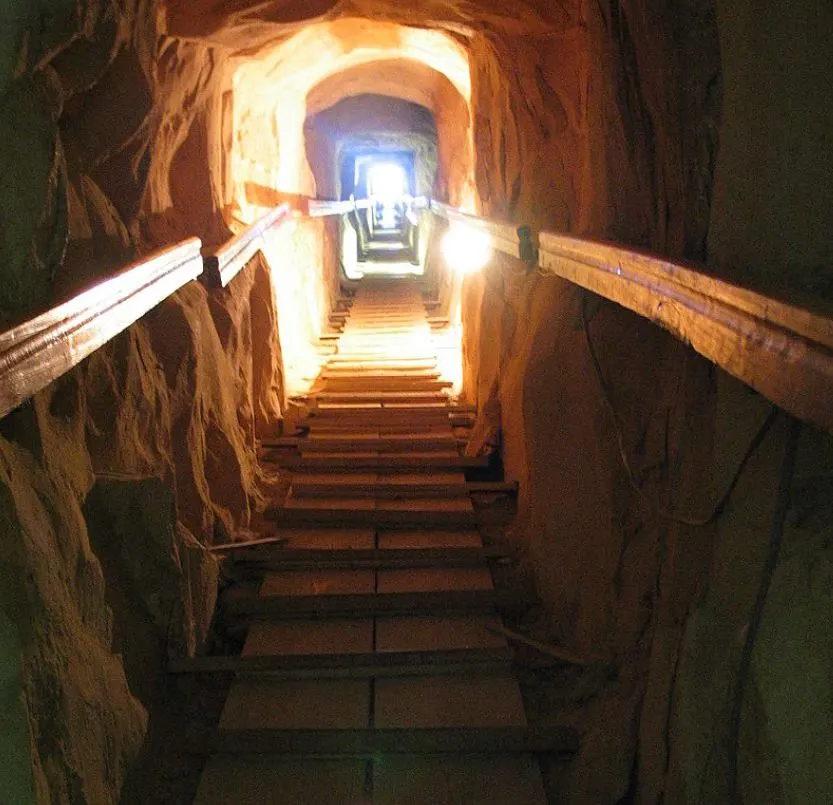
10. The 3rd attempt to build a straight pyramid didn’t work as well
Because Pharaoh Sneferu was left without a burial place due to the catastrophic result of the Meidum Pyramid, he had to scramble to get another construction project started.
He did exactly that as he started the construction of the “Bent Pyramid,” the second attempt to build a straight-sided pyramid.
The pyramid at Meidum was built at an angle of 51°50’35” and they remarkably even started steeper at the new project with 54°27′44.″ The engineers quickly realize, however, that the same problem would occur, so they readjusted this angle to 43°22′ after reaching a height of 47.04 meters (154 feet).
This second attempt wasn’t quite successful as well, resulting in the peculiar shape that you can see below.
Did Sneferu settle for this? No, he didn’t. He eventually ended up building the huge Red Pyramid at the Daishur Necropolis near Cairo!
